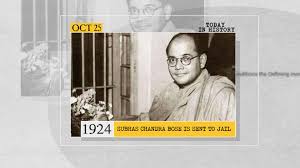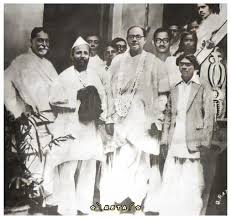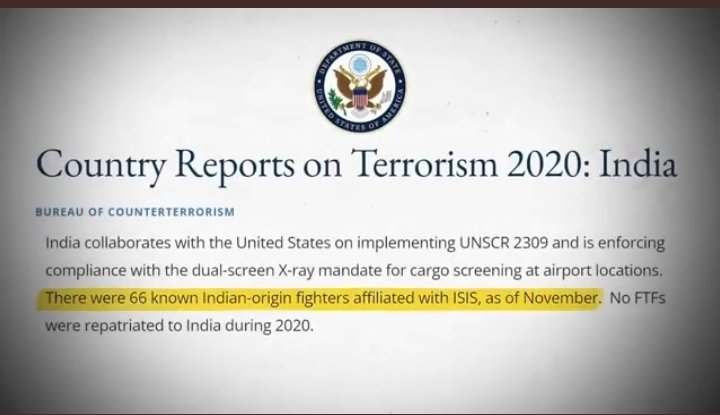Thread 🧵
Bharata Bhagya Bidhata — ভারত ভাগ্যবিধাতা
Behind every great leader shines a guiding light.
For Netaji Subhas Chandra Bose, that light was Basanti Devi, wife of Deshbandhu C.R. Das, but to him, simply “Mother.”
A story of love, courage & sacrifice…
Bharata Bhagya Bidhata — ভারত ভাগ্যবিধাতা
Behind every great leader shines a guiding light.
For Netaji Subhas Chandra Bose, that light was Basanti Devi, wife of Deshbandhu C.R. Das, but to him, simply “Mother.”
A story of love, courage & sacrifice…

1/1. Their first meeting was in 1917.
A 19-year-old Subhas, expelled from Presidency College after the Otten Affair, visited Deshbandhu’s home with fellow students.
That night Basanti Devi first met the fiery young man who would forever call her “Mother.”
A 19-year-old Subhas, expelled from Presidency College after the Otten Affair, visited Deshbandhu’s home with fellow students.
That night Basanti Devi first met the fiery young man who would forever call her “Mother.”

1/2. Even his own mother Prabhavati Devi once told her:
"I gave birth to Subhas, but you are his real mother."
Such was the depth of love & bond between Subhas and Basanti Devi.
"I gave birth to Subhas, but you are his real mother."
Such was the depth of love & bond between Subhas and Basanti Devi.

1/3. Subhas often came to the Das household late at night.
His simple request?
A plate of bhate bhat — boiled rice, vegetables & ghee.
Though the kitchen was closed, Basanti Devi would cook for him. Subhas ate it with the pure joy of a son.
His simple request?
A plate of bhate bhat — boiled rice, vegetables & ghee.
Though the kitchen was closed, Basanti Devi would cook for him. Subhas ate it with the pure joy of a son.

1/4. Whenever tensions arose between Deshbandhu & Subhas, it was Basanti Devi who calmed the storm.
Subhas later wrote:
"Our quarrels were always settled through the mediation of Mother."
Subhas later wrote:
"Our quarrels were always settled through the mediation of Mother."
1/5. Basanti Devi was more than a motherly figure, she was a fighter. 💪
✔️ President, Bengal Provincial Congress
✔️ Led Non-Cooperation & Civil Disobedience
✔️ Founded Nari Karma Mandir
✔️ Managed Bangalar Katha when Deshbandhu & Subhas were jailed.
✔️ President, Bengal Provincial Congress
✔️ Led Non-Cooperation & Civil Disobedience
✔️ Founded Nari Karma Mandir
✔️ Managed Bangalar Katha when Deshbandhu & Subhas were jailed.

1/6. In 1921, she became the first Indian woman jailed in the freedom struggle, arrested while selling khadi on Kolkata’s streets, just as Subhas had warned might provoke British backlash.
Kolkata erupted in outrage.
Kolkata erupted in outrage.

1/7. Released suddenly at midnight, she returned home — only to find Subhas weeping uncontrollably.
Deshbandhu, amused, lovingly called him the “Crying Captain.”
Deshbandhu, amused, lovingly called him the “Crying Captain.”
1/8. After her arrest, Basanti Devi took charge of Deshbandhu’s weekly publication “Bangalar Katha.” In 1921–22, she also served as President of the Bengal Provincial Congress. At the Chittagong Conference (1922), her rousing speech inspired grassroots agitation. 

1/9. When Deshbandhu died in 1925, Subhas begged Basanti Devi to step into politics as his successor.
She refused, choosing instead a quieter path of service.
Yet to Subhas, she remained his guiding light.
From jail, he received her priceless blessing — Deshbandhu’s shawl.
She refused, choosing instead a quieter path of service.
Yet to Subhas, she remained his guiding light.
From jail, he received her priceless blessing — Deshbandhu’s shawl.

1/10. After Independence, Basanti Devi devoted herself to social work. She founded Chittaranjan Seva Sadan for mothers, published Nazrul’s revolutionary poem, & in 1959 inspired Kolkata’s 1st govt women’s college – Basanti Devi College. Honoured with the Padma Vibhushan (1973). 



1/11. Basanti Devi, born 23 March 1880, daughter of Baradanath Haldar (diwan of a vast zamindary in Assam), studied at Loreto House, Kolkata. At just 17, she married C R Das (Deshbandhu). Together they had 3 children, before destiny drew her into India’s freedom struggle. 

1/12. History calls her Deshbandhu’s wife.
But for Subhas, she was Mother — his comfort in pain, his strength in struggle, his quiet guide in the storm.
Their bond was beyond politics. It was love, trust, and blessing, the kind that forges leaders and shapes nations.
But for Subhas, she was Mother — his comfort in pain, his strength in struggle, his quiet guide in the storm.
Their bond was beyond politics. It was love, trust, and blessing, the kind that forges leaders and shapes nations.

Kazi Nazrul Islam painted Basanti Devi not just as a freedom fighter, but as the spirit of spring itself —
“কুহেলীর দোলায় চ’ড়ে এলো ঐ কে এলো রে?
মকরের কেতন ওড়ে শিমুলের হিঙুলে বনে।
পলাশের গেলাস – দোলা কাননের রংমহলা,
ডালিমের ডাল উতলা লালিমার আলিঙ্গনে।।”
(Part - 7)
“কুহেলীর দোলায় চ’ড়ে এলো ঐ কে এলো রে?
মকরের কেতন ওড়ে শিমুলের হিঙুলে বনে।
পলাশের গেলাস – দোলা কাননের রংমহলা,
ডালিমের ডাল উতলা লালিমার আলিঙ্গনে।।”
(Part - 7)
• • •
Missing some Tweet in this thread? You can try to
force a refresh

























